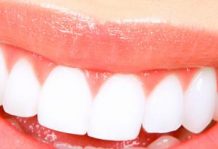Factors that regulate the composition, development, amount, coexistence and distribution of oral microorganisms on surfaces of the oral cavity (primary ecosystems) are known as environmental determinants. There are four types:
Physico-chemical
The majority of microbial genera and species related to man grow, reproduce and live in environmental conditions that allow for some microbial proliferation or simply survival. In oral ecosystems, these environmental conditions depend on humidity (water), salivary pH, temperature and redox potential.
Water is an important factor for microbial development in the oral cavity, because inside of it the exchange of nutrients, metabolic reactions and the elimination of waste products all occur. Water is vastly available, as it is the main component in saliva, surrounding all oral ecosystems, with the exception of the gingival sulcus.
The pH of saliva varies between 6.5 and 7.5, and is subjected to continuous fluctuations. A decrease in pH may occur in response to the input of sugars in the oral cavity and the production of acids that result from bacterial metabolism. However, conditions including fasting and protein metabolism (Highasida, 2008)1 tend to raise it. Acidic pH promotes tooth demineralisation, while basic pH promotes the accumulation of calculus. Bacteria are susceptible to a decline in pH, so they tend to develop strategies to tolerate acids, for example, stress protein production, ATPase activation, lactate use or inhibition of intracellular carbohydrate transport systems. Likewise, they can produce alkaline substances through protein catabolism using urease, desaminase and other enzymes. Still, it is saliva which acts as the most important buffer by containing, among others, carbonates, phosphates, and histidine-rich proteins.
The temperature in the oral cavity is close to 37°C, although it may vary dramatically in a matter of seconds depending on the temperature of food ingested during meals. Microorganisms have great power to withstand the most unfavourable conditions of temperature by altering their physiology and activating the expression of certain virulence-related genes (fimbriae formation, protease production, synthesis of superoxide dismutase, etc.) affecting its pathogenicity.
The majority of oral microorganisms are strict anaerobes or facultative anaerobes. These respiratory traits are not expressed randomly, but are the result of the redox potential of the oral ecosystems in which they live. The oral cavity is a particularly anaerobic environment because of its anatomical determinants (lingual fissures, gingival crevices, cracks and proximal tooth areas which restrict the penetration of oxygen) and microbial determinants (many species use oxygen, creating low local redox potential).
Adhesion, aggregation and coaggregation
The oral cavity is an open ecosystem that receives constant input of microorganisms from the solid and liquid foods that are consumed and the air that is breathed. However, salivary flow, chewing, swallowing, oral hygiene and epithelial cell desquamation enhance the removal of bacteria from the oral surfaces. Some of these microorganisms can be retained in protected areas of the oral cavity, but others will need to overcome the forces of removal by using adhesion (union between microorganisms and host tissues), aggregation and coaggregation mechanisms (union between different species). Coaggregation is a very common phenomenon in the oral cavity and it bears medical importance, as it is largely responsible for dental plaque formation and for the typical images of mushroom or tower-shaped microbial structures.
Nutritional
Oral microorganisms derive their nutrients from surrounding tissues, from host secretions (endogenous sources), from other microorganisms (bacterial sources) and from diet (exogenous sources).
Endongenous nutritional supply comes from saliva and from crevicular fluid, and varies considerably in the oral mucosa, the tongue dorsum or on supragingival dental surfaces. Water channels in oral biofilm are a primitive circulatory system allowing for metabolic exchange between bacterial species through the exchange of nutrients and utilisation by certain bacteria of metabolites excreted by others. The most important exogenous supply for bacteria is sacarose, with which they synthesise reserve polysaccharides; their fermentation causes a decrease in pH, limiting the development of sensitive microorganisms.
Host protection
The integrity of teeth and mucosa, cell desquamation, lymphoid tissues, saliva and chewing, swallowing and suction are host factors that limit the establishment, multiplication and penetration of microorganisms in the oral cavity.
Saliva is the first line of defense for maintaining oral health because of its buffering capacity, its role in tooth remineralisation and its antibacterial effect (Lagerlof et al., 1994)2. It contains proteins whose function is to retain moisture and act as a protective barrier for tooth structures and for structures surrounding teeth, by depositing on surfaces and forming an acquired pellicle. Proteins such as lysozyme and beta-defensins have antibacterial properties, and lactoferrin, with the capacity to bind tightly to iron, prevents the use of this element by many microorganisms for which it is crucial. Furthermore, saliva contains immune proteins, of which immunoglobulin A is predominant, being secreted by plasma cells of connective tissue. These antibacterial and immune proteins delay bacterial growth and tooth decay.
- Higashida. Odontología preventiva; Placa Dentobacteriana. McGraw-Hill Interamericana 2000;62.
- Lagerlof, F.Y. y Oliveby, A. Caries-protective factors in saliva. Adv. Dent. Res. 1994;8: 229-238.
 initiative
initiative 
